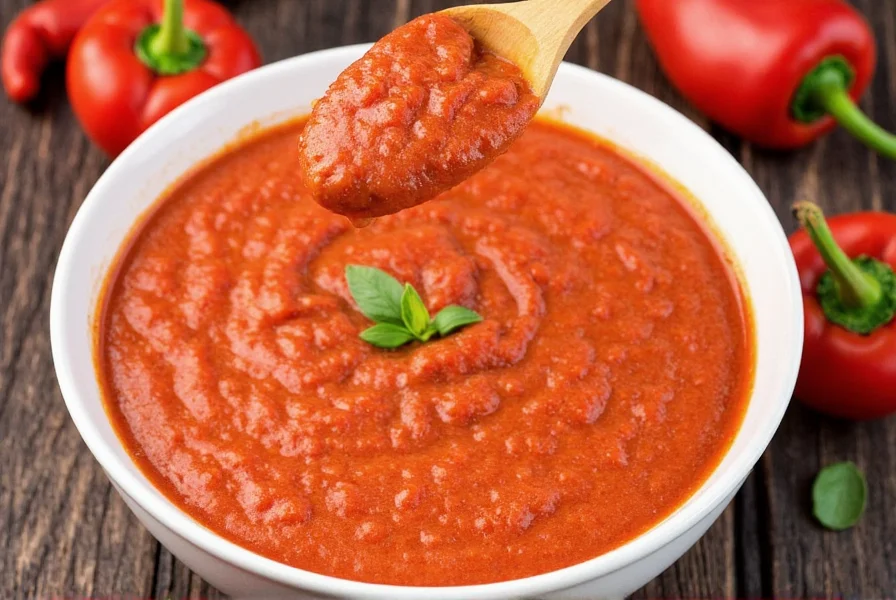Discover the 3 Essential Secrets for Authentic Red Pepper Pizza Sauce
Mastering these three techniques—roasting peppers for depth, reducing tomatoes for perfect acidity, and timing fresh herbs correctly—will transform your pizza from ordinary to extraordinary. Let's dive into each step to unlock authentic flavor.
Secret #1: Pepper Selection and Roasting
Roasting red peppers is the foundation of authentic flavor. Start with a mix of sweet bell peppers and spicy varieties like jalapeños or serranos. Roast them over an open flame or under the broiler until charred, then steam in a covered bowl for 10 minutes. This process intensifies sweetness while mellowing heat, creating a complex flavor profile that balances spice and richness. Pro tip: Remove seeds and membranes from spicy peppers to control heat levels without sacrificing flavor.

Secret #2: Tomato Quality and Reduction
Use high-quality San Marzano tomatoes for their natural sweetness and low acidity. Simmer them slowly in a heavy-bottomed pot until reduced by half, stirring occasionally. This concentrates flavors while eliminating watery texture. Key detail: Add a pinch of baking soda during reduction to neutralize excess acidity, creating a balanced base that complements the roasted peppers without overpowering them.
Secret #3: Slow Simmering with Fresh Herbs
Never add dried herbs early! Fresh oregano, basil, and thyme should be added in the last 10 minutes of cooking to preserve volatile aromatic compounds. Simmer gently at 180°F (82°C) for 15 minutes to meld flavors without boiling away delicate notes. Expert insight: A splash of red wine vinegar at the end brightens the sauce while enhancing the pepper's natural sweetness.
Conclusion
These three secrets—roasting peppers for depth, reducing tomatoes for perfect acidity, and timing fresh herbs correctly—create a sauce that's both authentic and versatile. Whether you're making classic Margherita or experimenting with gourmet toppings, this foundation ensures every bite delivers restaurant-quality flavor. Remember: quality ingredients and precise technique are the true secrets to unforgettable pizza.











 浙公网安备
33010002000092号
浙公网安备
33010002000092号 浙B2-20120091-4
浙B2-20120091-4